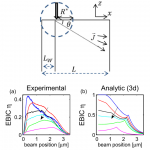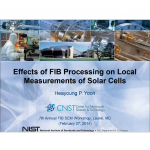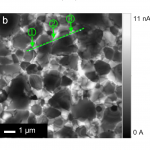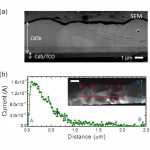 “Local measurement of photocurrent and band gap in CdTe solar cells”, Y. Yoon, J. Chae, A. Katzenmeyer, H. Yoon, J. Schumacher, S. An, A. Centrone, N. Zhitenev, 31st European Photovoltaic Solar Energy Conference and Exhibition, p. 1243, 2015. (DOI: 10.4229/EUPVSEC20152015-3DV.1.34)
“Local measurement of photocurrent and band gap in CdTe solar cells”, Y. Yoon, J. Chae, A. Katzenmeyer, H. Yoon, J. Schumacher, S. An, A. Centrone, N. Zhitenev, 31st European Photovoltaic Solar Energy Conference and Exhibition, p. 1243, 2015. (DOI: 10.4229/EUPVSEC20152015-3DV.1.34)
1. Center for Nanoscale Science and Technology, National Institute of Standards and Technology, Gaithersburg, Maryland, 20899, USA.
2. Maryland Nanocenter, University of Maryland, College Park, Maryland, 20742, USA
ABSTRACT. Polycrystalline thin film technology has shown great promise for low cost, high efficiency photovoltaics. To further increase the power efficiency, a firm understanding of microstructural properties of the devices is required. In this work, we investigate the inhomogeneous electrical and optical properties using local excitation techniques that generate excess carriers by a near-field light illumination or by a focused electron beam irradiation. The spatially resolved photocurrent images of n-CdS / p-CdTe devices obtained by both techniques show high carrier collection efficiencies at grain boundaries. A novel and complementary technique, photothermal induced resonance (PTIR), is also used to obtain absorption spectra and maps in the near-field over a broad range of wavelengths. In PTIR a wavelength tunable pulsed laser is used in combination with an atomic force microscope tip to detect the local thermal expansion induced by light absorption. Sub-micrometer thick lamella samples of CdTe solar cells are measured, and the variation of local band-gap is analyzed. We discuss the resolution and the sensitivity of the techniques in the range of photon energies close to the band gap.






